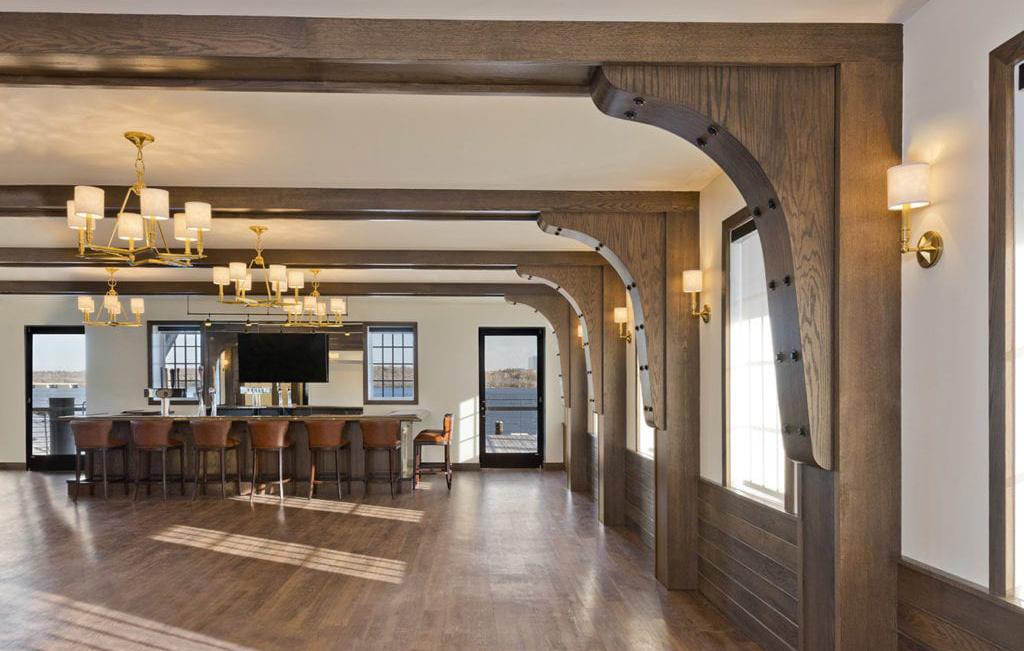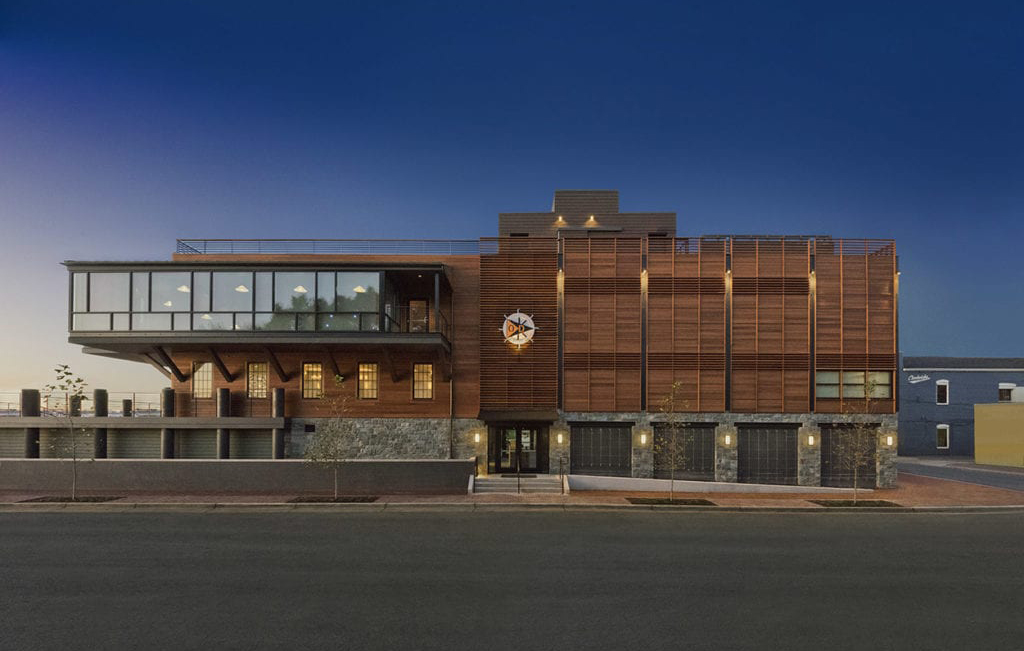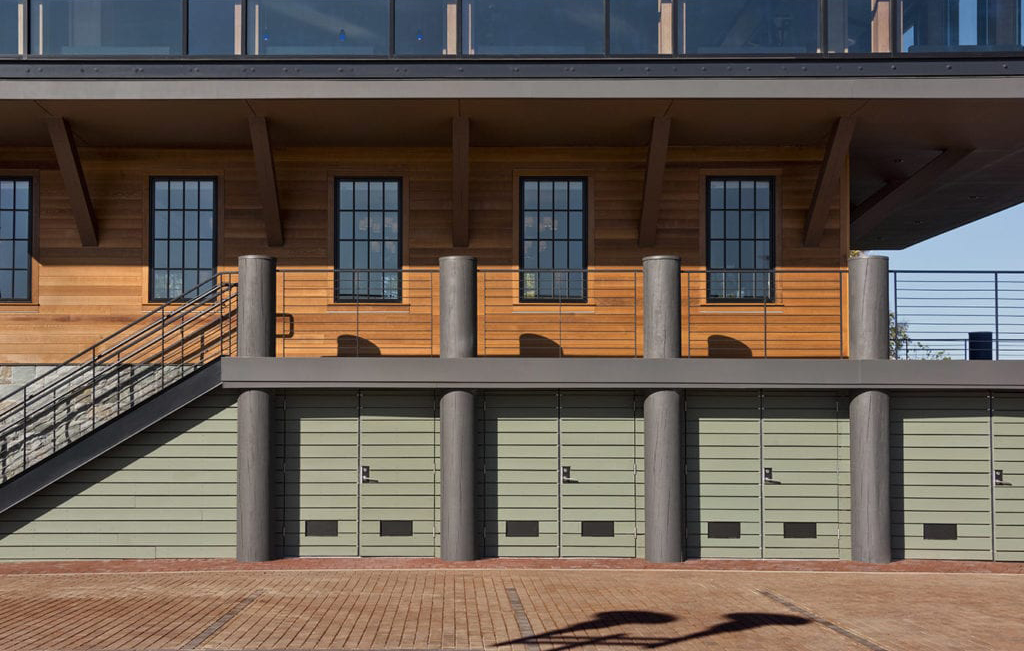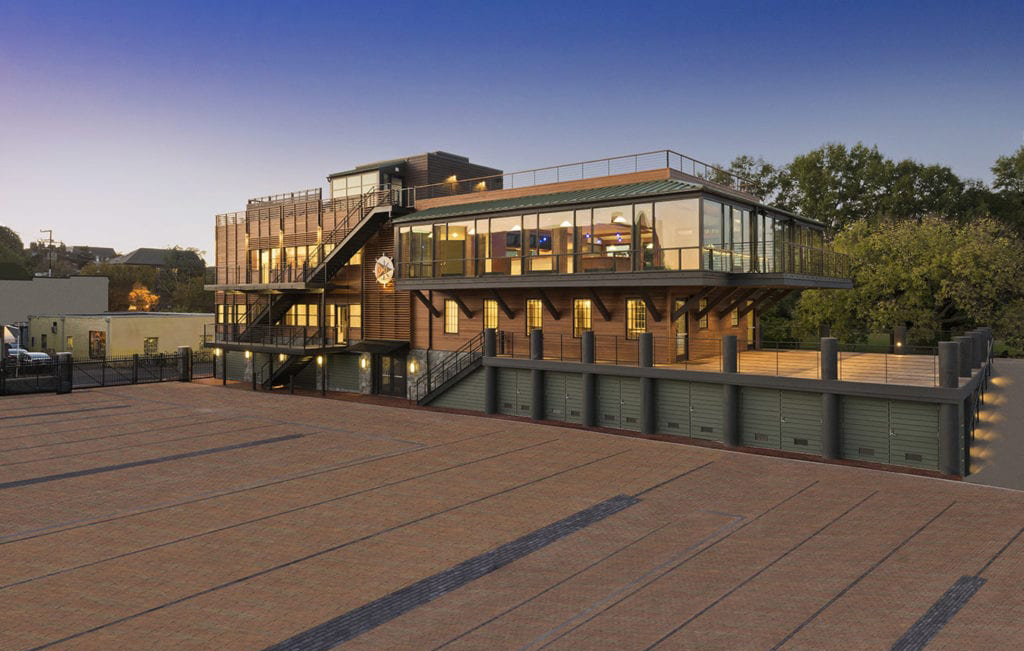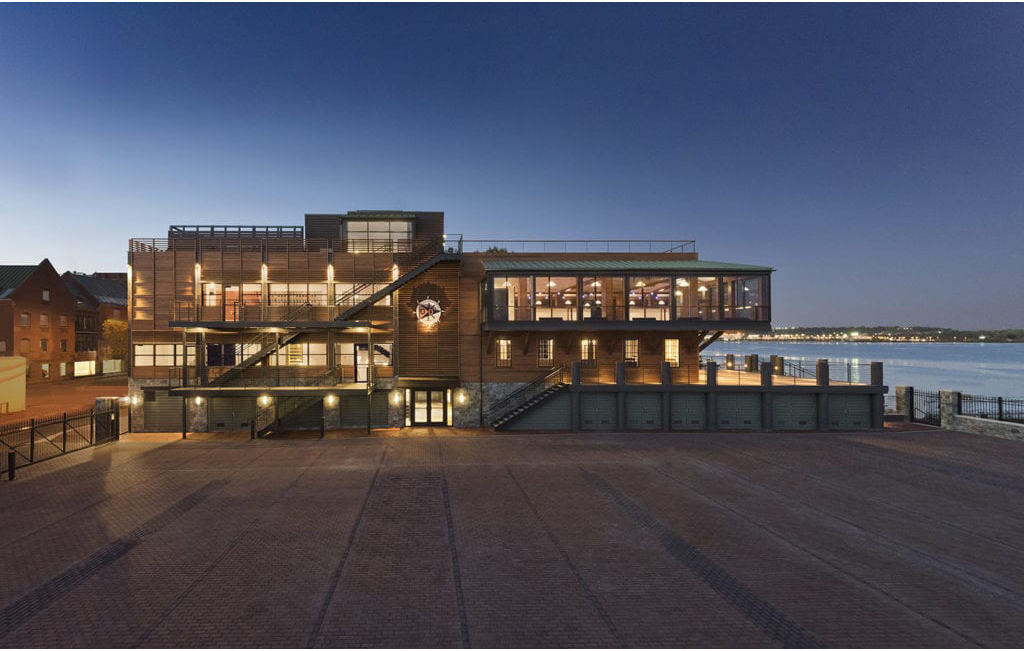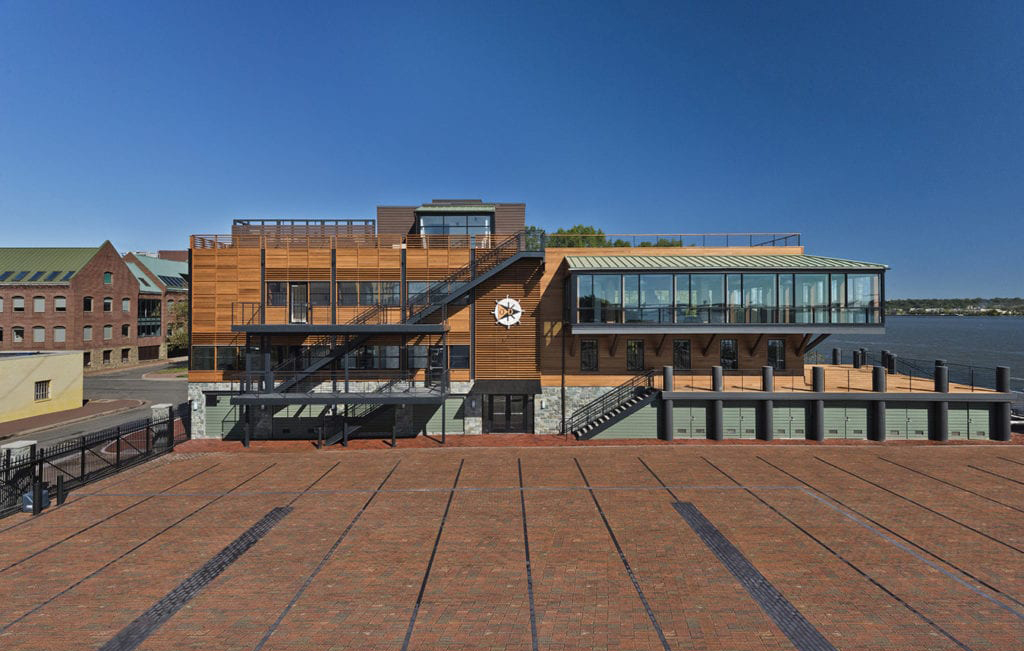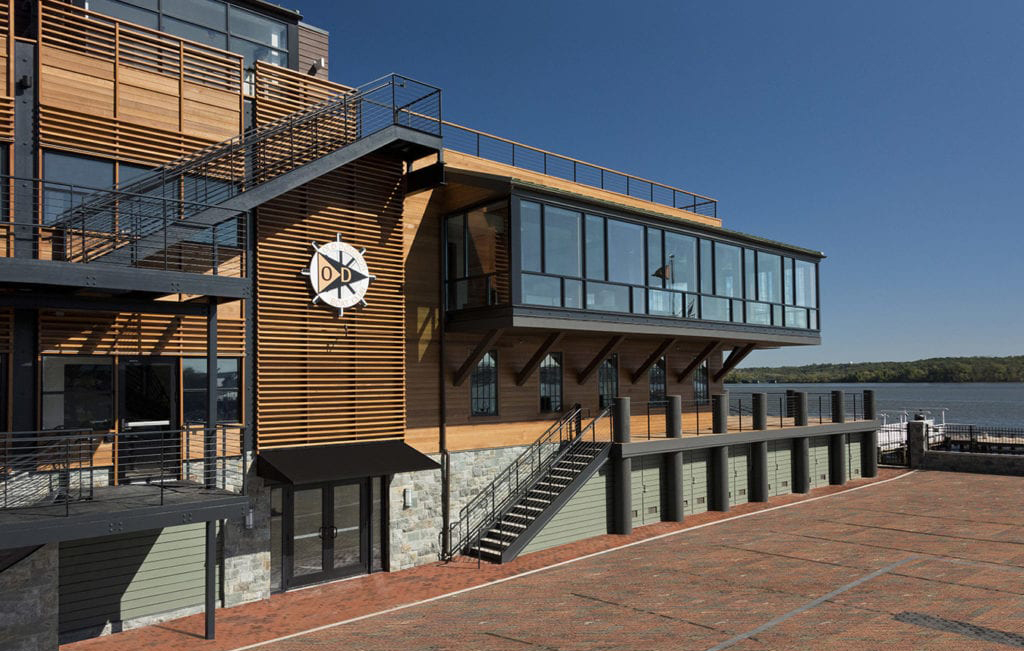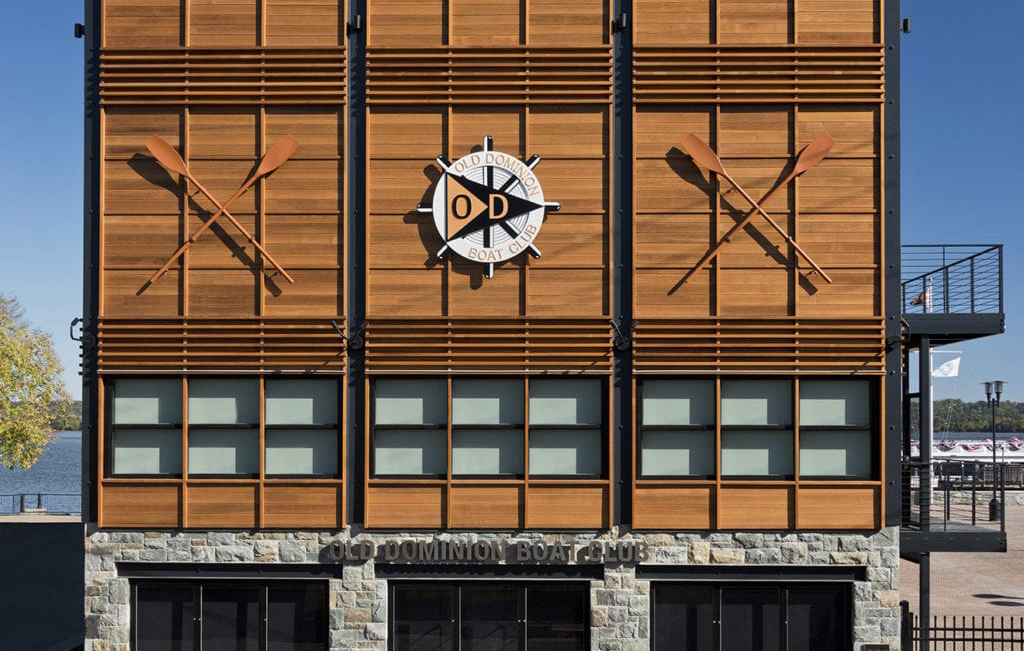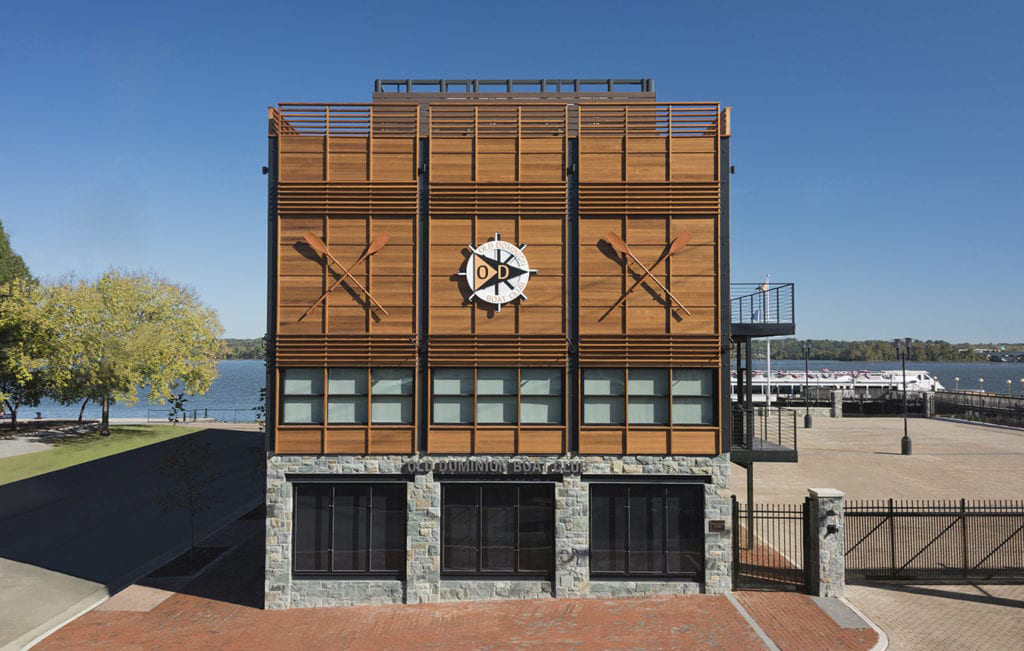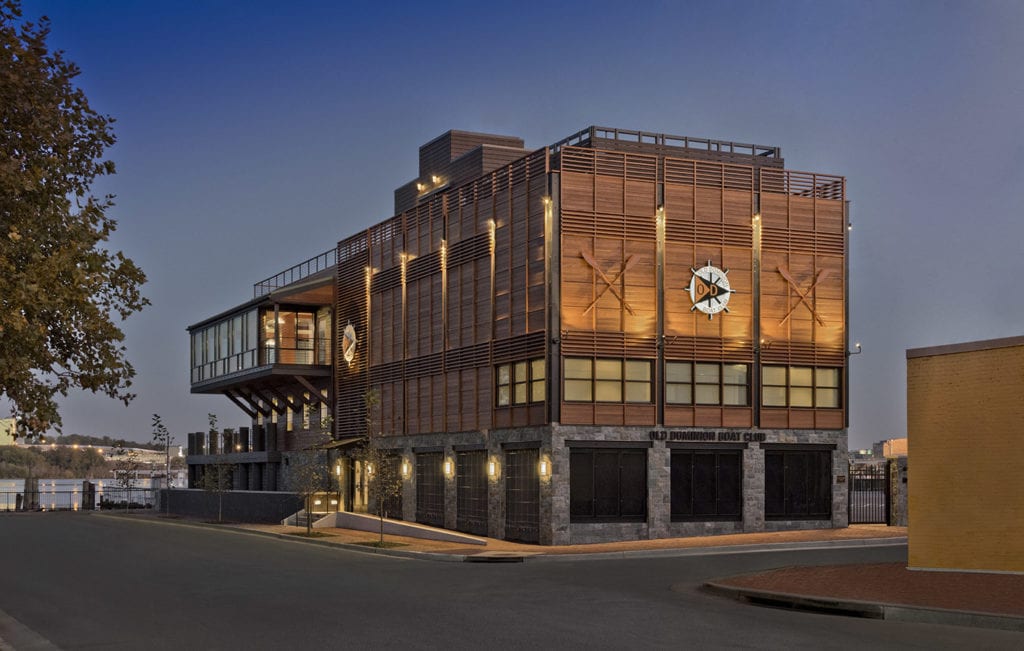The Old Dominion Boat Club
Alexandria, Virginia
Quick Facts:
Client: The Old Dominion Boat Club
Market: Public/Civic
Size: 12,800 gsf
Services: Architecture, Commercial, Interiors, Landscape, Sustainability, Hospitality
Photographer: Jessica Marcotte
Awards: 2019 AIA Award of Merit NOVA Chapter, 2018 Society of American Registered Architects – National Chapter, 2018 Alexandria Beautification Award
For more information on the design process, visit Project Journal
In August of 1880, thirty-six young men gathered at the Mansion House to form a club dedicated to water sports – sailing, rowing, canoeing and swimming. They called their new association the “Old Dominion Boat Club of Alexandria.” The members built their first clubhouse on The Strand near the foot of Duke Street, and by 1891 the club had acquired two four-oared shells, two double outriggers, and a 60-foot barge. In 1923 the members built a new clubhouse at its current location, 1 King Street.
Over the summer of 2014, the club formally agreed to accept Alexandria’s offer to move to the city-owned Beachcombers restaurant site at the base of Prince Street. The Beachcombers property is bordered by Prince Street to the north, the Potomac River to the east, Strand Street to the west and an asphalt parking lot to the south.
The proposed new clubhouse consists of an approximately 12,000-square-foot, three-story structure with a 45-car parking lot on the south side of the structure. On the ground level will be an entry lobby with historic artifacts on display, storage, lockers and showers, and loading/service areas. The first floor will feature a large open hall for member meetings and banquet rentals, administrative offices, a prep kitchen and outdoor patio. The second floor is to include a ballroom, members’ board room, and a full kitchen.
The design of the ODBC is meant to reflect the narrative of a significant and treasured past, present and future of this location now highlighted by the Old Dominion Boat Club’s own impressive history. In the early years this site was, in fact, in the river. The piers and decking for the front of the building illustrates the history of the waterfront dating back to the 1700s. The Beachcombers was built in the late 1940s and the retention of this structure will assure its legacy. And lastly, the addition to the Beachcombers building has been designed to reflect the history of the boat club by using materials and detailing similar to what a boat builder would purpose.

